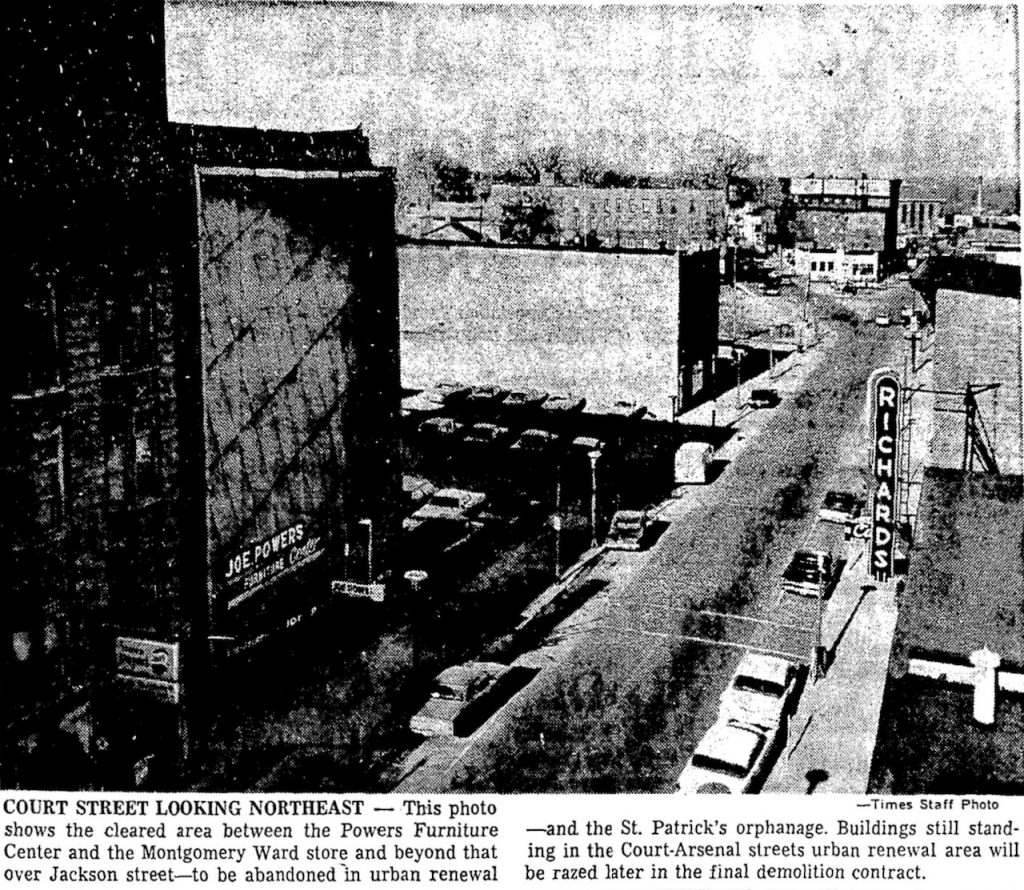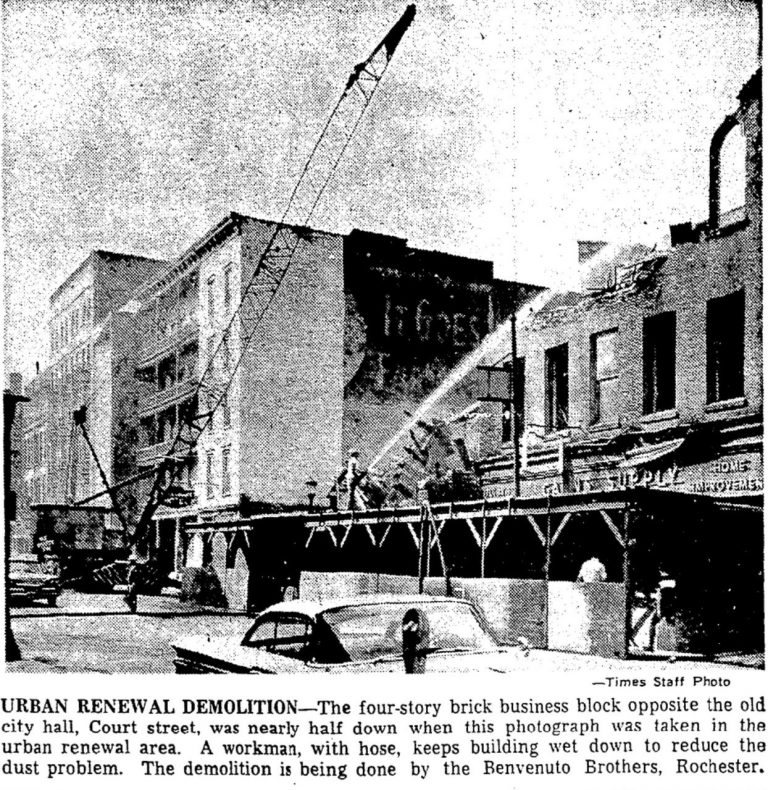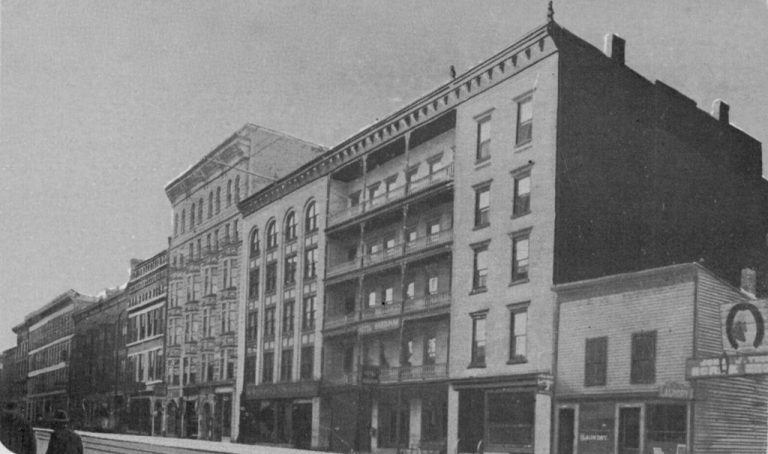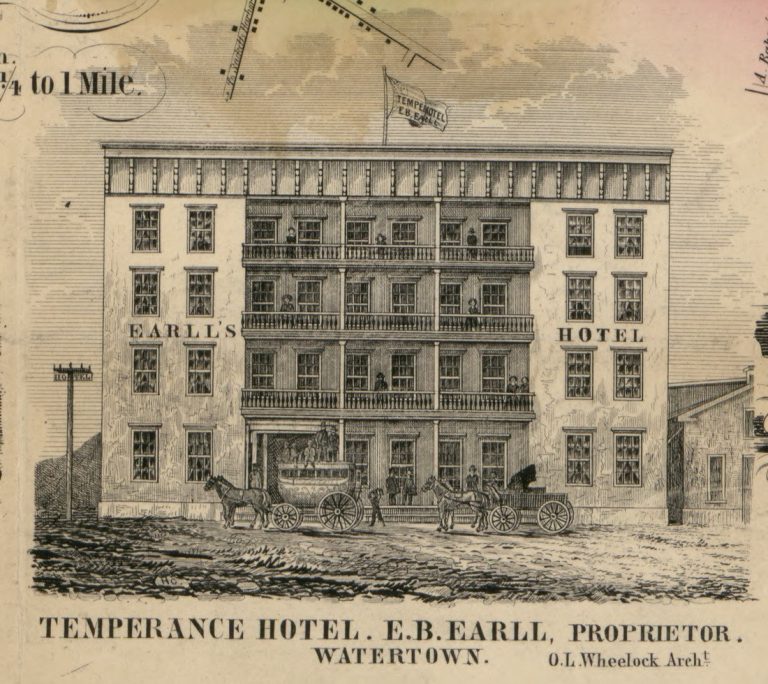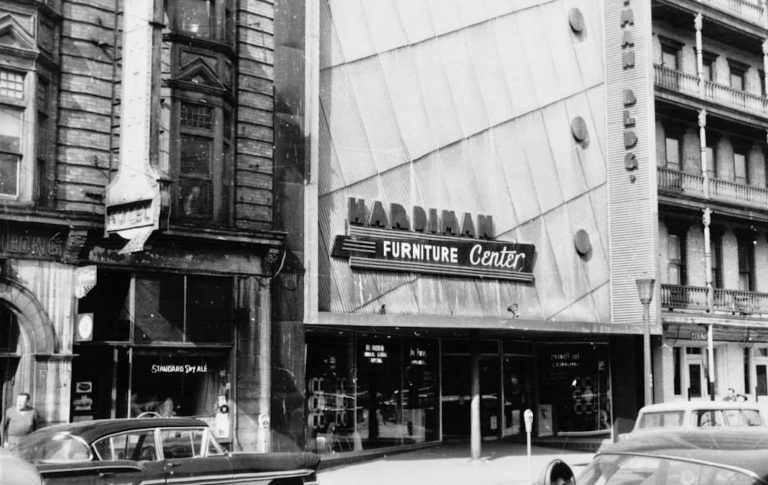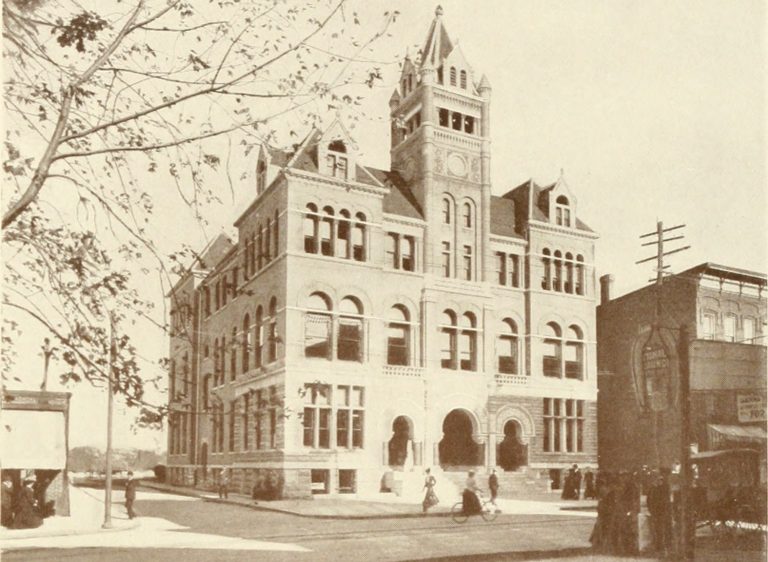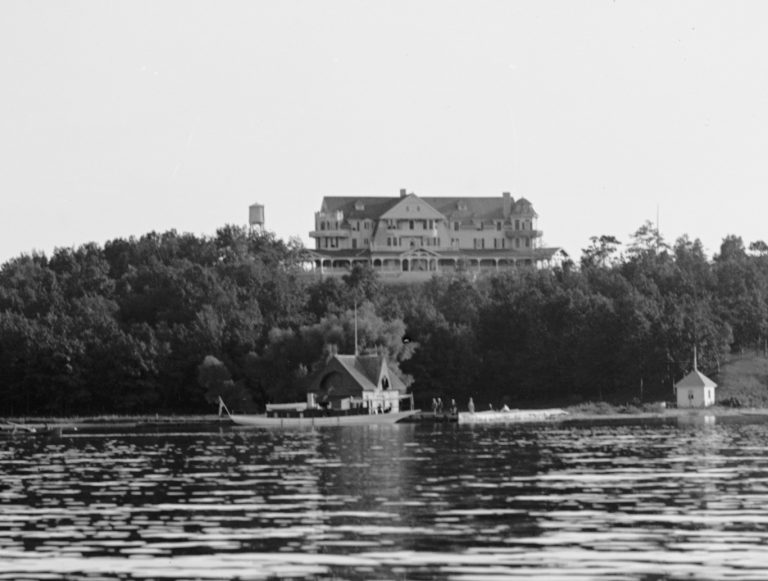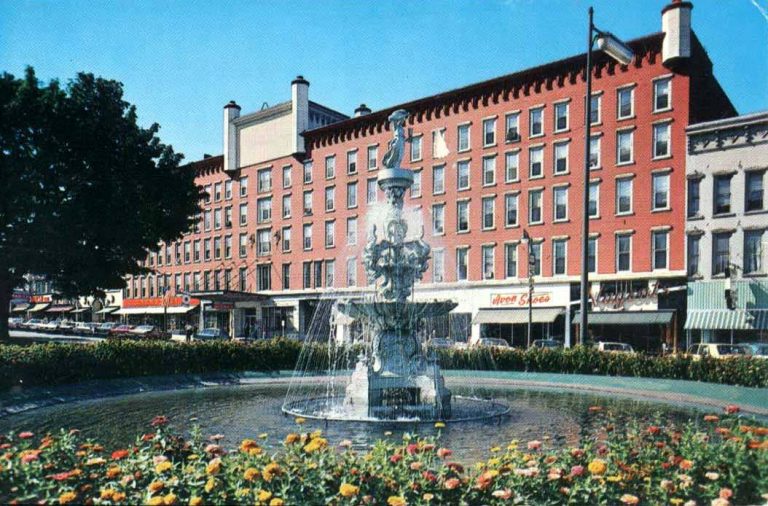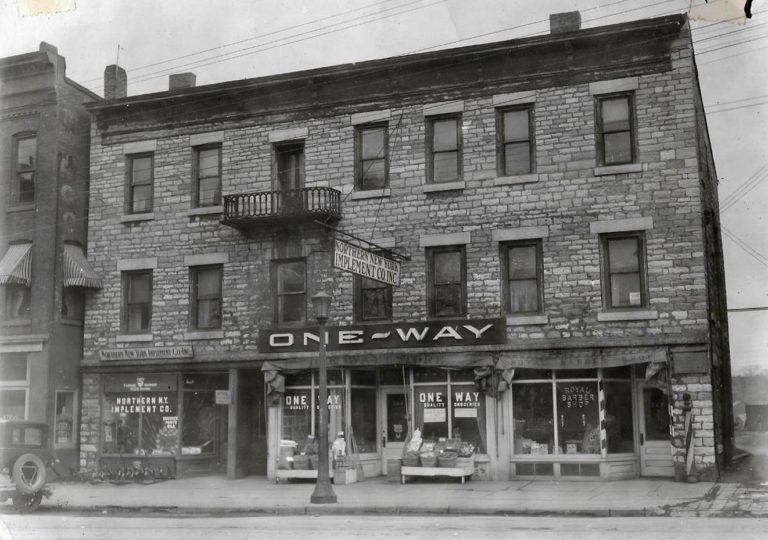From Kirby House, to Earll Hotel, Hotel Hardiman and Roosevelt Hotel, the Old Court Street Hotel Saw a Lot In Its 116 Years
The Kirby House on Court Street was built in 1850 when the village of Watertown was experiencing unprecedented re-construction after the great fire of 1849. Occupying the site previously was a house belonging to James M. Ferrin. After the fire, the property was purchased by Chauncey Jackson and Elijah Buck who built the Kirby House with the cost, $30,000, mortgaged to Ferrin.
The Kirby House would heralded as a fine hotel and go through a number of changes over the next century plus, becoming a Temperance Hotel in the early 1850s shortly after opening and later becoming Hotel Hardiman and Roosevelt Hotel in its remaining years. It’s very first two years, however, were marked by scandal.
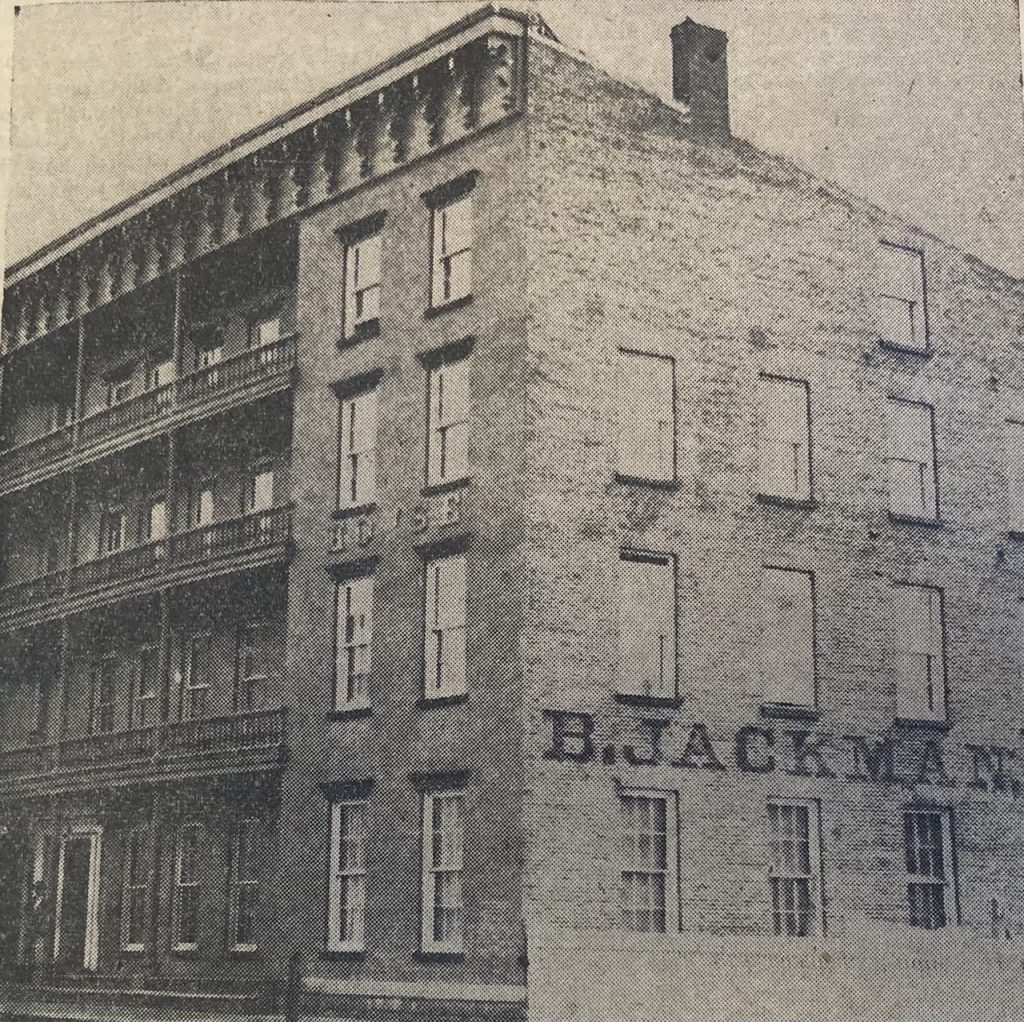
In 1852, Buck and Jackson would end up in jail for 6 months for fraud, but ultimately were the victims of a scam. Initially, the duo hired an individual to do all the buying for the hotel and instructed him to pay cash only. Instead, the man pocketed the money and charged everything over the course of many months until the bills came due, leaving the two high and dry.
Upon the Kirby House’s opening in 1850, The New York Reformer would write on Nov. 7—
We are gratified in seeing the spirit of progress manifested by our Court Street capitalists. The extensive ranges of magnificent stores, extending far down that business thoroughfare, and filled as fast as finished; together with the imposing Gothic Church edifice—the Kirby House, and the tasty private residences recently constructed—is indicative of a disposition to compete steadily for the Depot of trade and commerce.
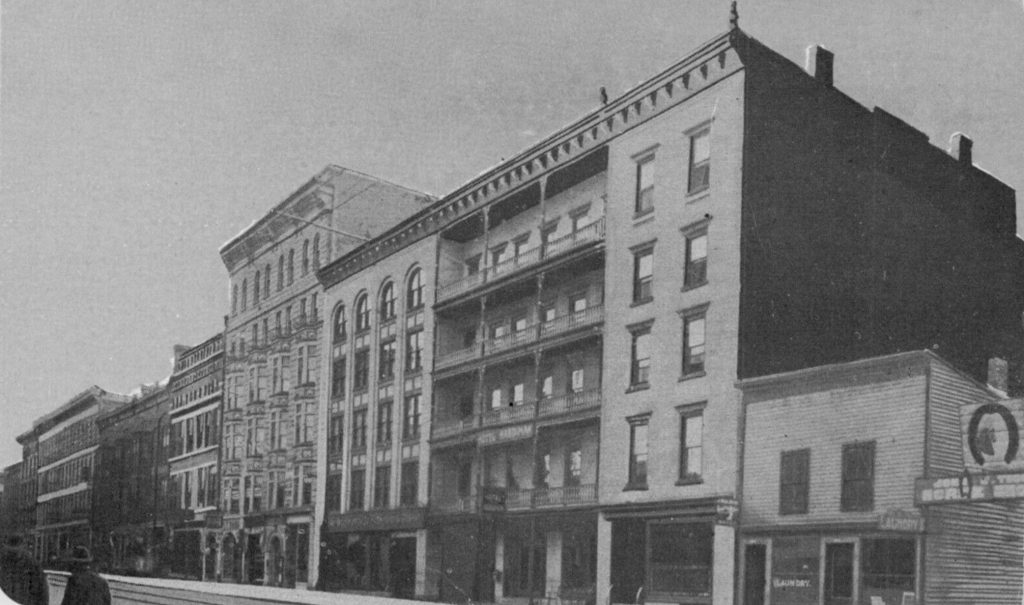
At the time, erecting the buildings as they did in one long stretch of various “blocks” in close proximity seemed like the last thing the businesses would have done. The prior year, the conflagration which destroyed the entirety of the section of downtown had flames described as a leaping from building to building. As it turned out, what the populace after the fact seemed to be more concerned about was mud. Court Street would be partially laid with planks of wood, some taking a liking to riding over it and calling for the entirety of the village’s roads to be covered with wooden planks.
In 1852, the Kirby House and some shops in the Paddock Arcade were amongst the first to be lit with gas light. Two years later, after the Buck and Jackson ordeal, the Kirby House was purchased by E. B. Earll who re-opened it as a Temperance House under his own name, the Earll Hotel. This sure pleased the editors at the New York Reformer, who, previously when it opened, remarked sourly on its serving alcohol. In the 1854 announcing the change, they would write—
At last we have a high gratification of announcing the interesting fact that Watertown is to be furnished with a first class Temperance Hotel. Mr. E. B. Earll, late of Pulaski has purchased the Kirby House in this Village and has opened it as a Temperance House. Mr. Earll is an experienced hotel keeper, and has a high reputation as a man of business and gentleman.
We have said we believed a Temperance House would be well patronized here by the public generally and temperance men in particular. There is now an opportunity for the verification of our prediction. Temperance men are accused of believing their profession in patronizing public houses. It has been and still is charged upon them, by the liquor folks, that notwithstanding their zealous professions for temperance they always give their patronage to rum taverns, even though a good temperance house stands opposite.
The Good Templars of Watertown would hold a grand festival at the newly anointed Earll Hotel, later that year. The members of several lodges throughout Jefferson and Lewis Counties were requested to participate in the occasion. The Good Templars, aka Independent Order of Good Templars (IOGT), were the Knights of Jericho, changed and renamed, with a platform of, you guessed it, Temperance.
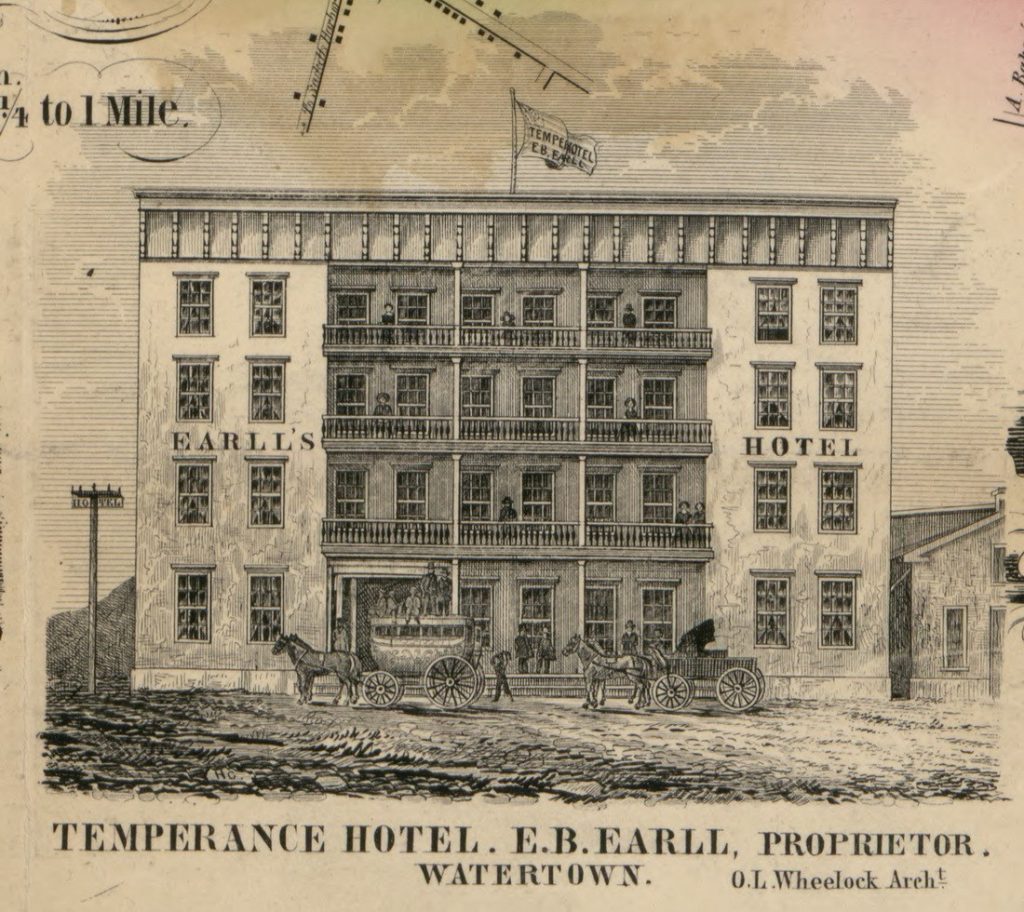
The movement apparently didn’t last long as any reference to the Earll Hotel or Temperance Hotel were gone after 1857 and the property appeared to resort back to the Kirby House (and, in some cases, seemed to never have even changed as it was consistently used as a reference for other, neighboring businesses to make the public aware of their own location in relation to it.) Earll had moved on and the New York Reformer would publicly lament that, under Earll, it was most profitable despite not selling alcohol while turning their hopes that the American Hotel would become the new dry-house.
In 1859, Benjamin Jackman would take over as proprietor of the Kirby House. Jackman was a hotelier by trade, having worked in the business for years including managing the old Empire House on Public Square. Aside from being a hotel, the premises would also be home to doctor’s offices and a nursery of the horticultural variety. Jackman’s tenure at the Kirby House would be a short one, as he would purchase what was later known as the Globe Hotel before a significant makeover turned it into the Otis House on Arsenal Street.
Jackman’s involvement there would be short, too, later moving onto the Crowner House, also on Court Street, in a partnership with Solon Wilder before purchasing the Kirby House and running it once again for two years in the 1870s. Benjamin Jackman would pass away in 1889 at the age of 87 and be buried in Brookside Cemetery.
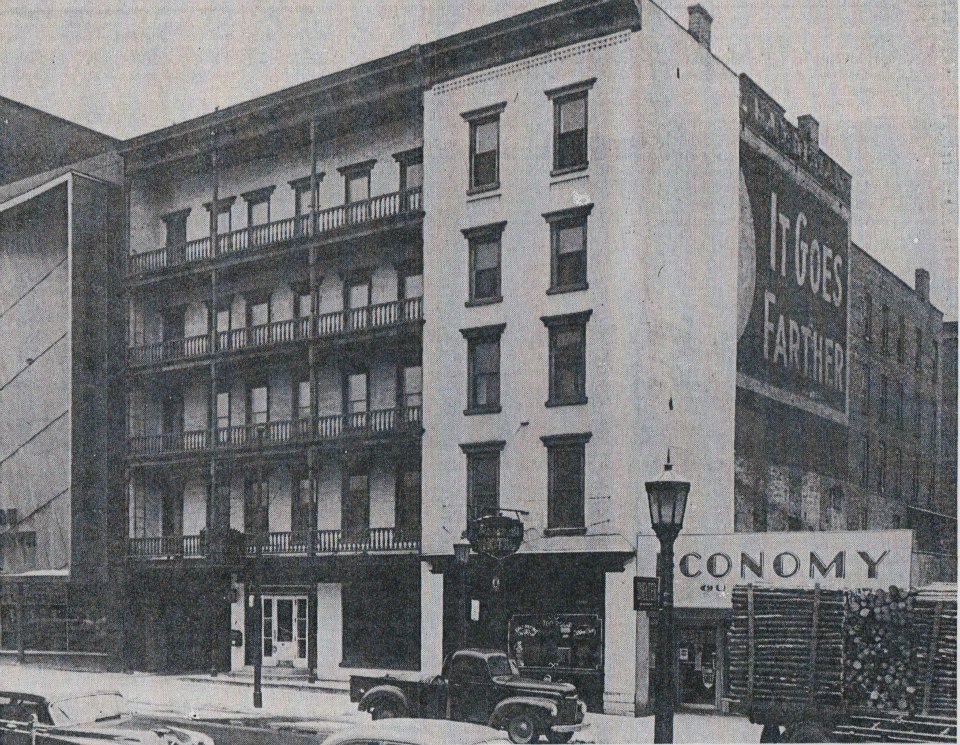
Kirby House Remodeled And Becomes Hotel Hardiman In 1895
In 1891, Michael Hardiman would purchase an interest in a business across the street from the Kirby House which became known as Zimmerman and Hardiman. Four years later, Leland G. Woolworth would purchase the Zimmerman interest and the store would become known as the Hardiman-Woolworth Co., one of the largest furniture stores in the state outside of New York City.
A year prior to Woolworth’s joining, Michael Hardiman and his brother, John, a well known contractor in the city, would purchase the Kirby House and neighboring structure. John, having built a number of schools and nearly 30 private residences in the city, would remodel the Kirby House and reopen it as the Hotel Hardiman while a portion of the building would be remodeled as the Hardiman-Woolworth Co.
The Watertown Daily Times would mention of the work in May of 1895—
The firm of Zimmerman & Hardiman furniture manufacturers and retailers which has occupied two stores in the Cottage Block for many years, is making preparations to take possession of its new quarters in the Hardiman Block on the opposite side of the street, on the site of the old Kirby House. When the change is made Zimmerman & Hardiman will be found in a five story building, modern in every particular, with elevator and all conveniences. The part of the block to be occupied by the firm will be at the east end, covering the old Kirby House lane leading to Arsenal Street, and part of the old Kirby House.
On October 15, 1895, the new Hotel Hardiman would be ready for opening and contain about 75 sleeping rooms and on the first floor, an office, gentlemen’s sitting room, bar, billiard room and bathrooms.
The second floor housed a parlor, dining room, china closets, kitchen and several sleeping rooms and private baths while the upper three floors were all rooms and baths. Within two years, the balconies had a direct view practically across the street from the City Hall while in the rear of Hotel Hardiman was the City Opera House. In the remodeling process of the Kirby House, it was said that all was practically taken away except the front brick walls.

The Roosevelt, The New Roosevelt and Urban Renewal
In March of 1942, Charles E. Morrison and his twin-brother, Corydon H. Morrison, purchased The New Roosevelt Hotel from Michael Williams who had owned it since 1936 as The Roosevelt, its name change coming in 1933, and later the New Roosevelt after some renovations including “The Blue Room,” a 150 person banquet room.
The Morrison brothers would make extensive renovations, operating it until 1954 when they sold it to Gerald O. Leddy and Wilfred C. Hart. Charles would go on to run a car dealership and later The King restaurant on Mill Street, passing away in 1959. The following year, Charles twin-brother and widow, Mrs. Phyllis A. Morrison, would buy the New Roosevelt back from Leddy & Hart.
The New Roosevelt would run until 1965 when the city would condemn it as part of the urban renewal program. It would be razed the following summer with dozens of other buildings, 116 years after it was erected.
